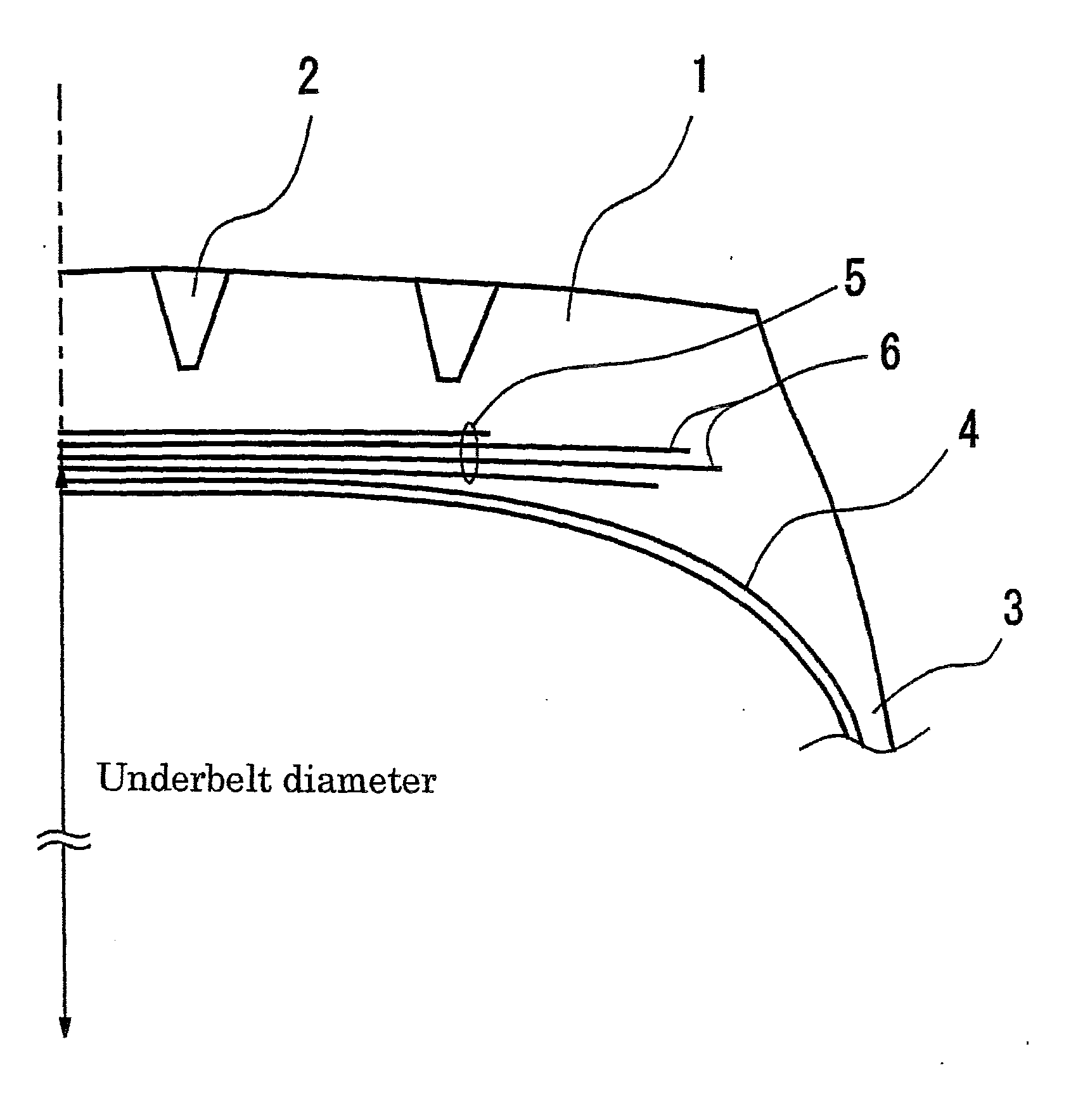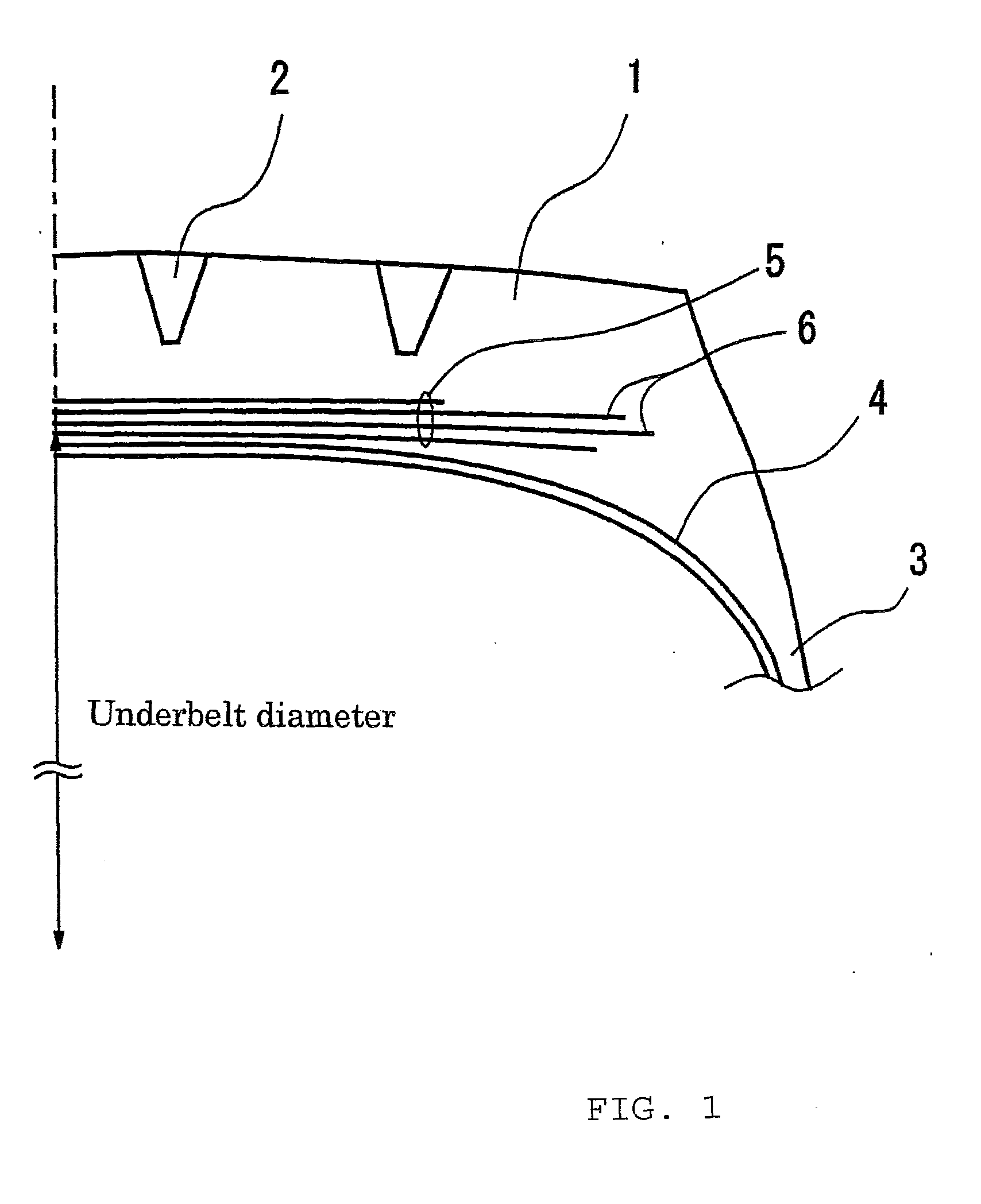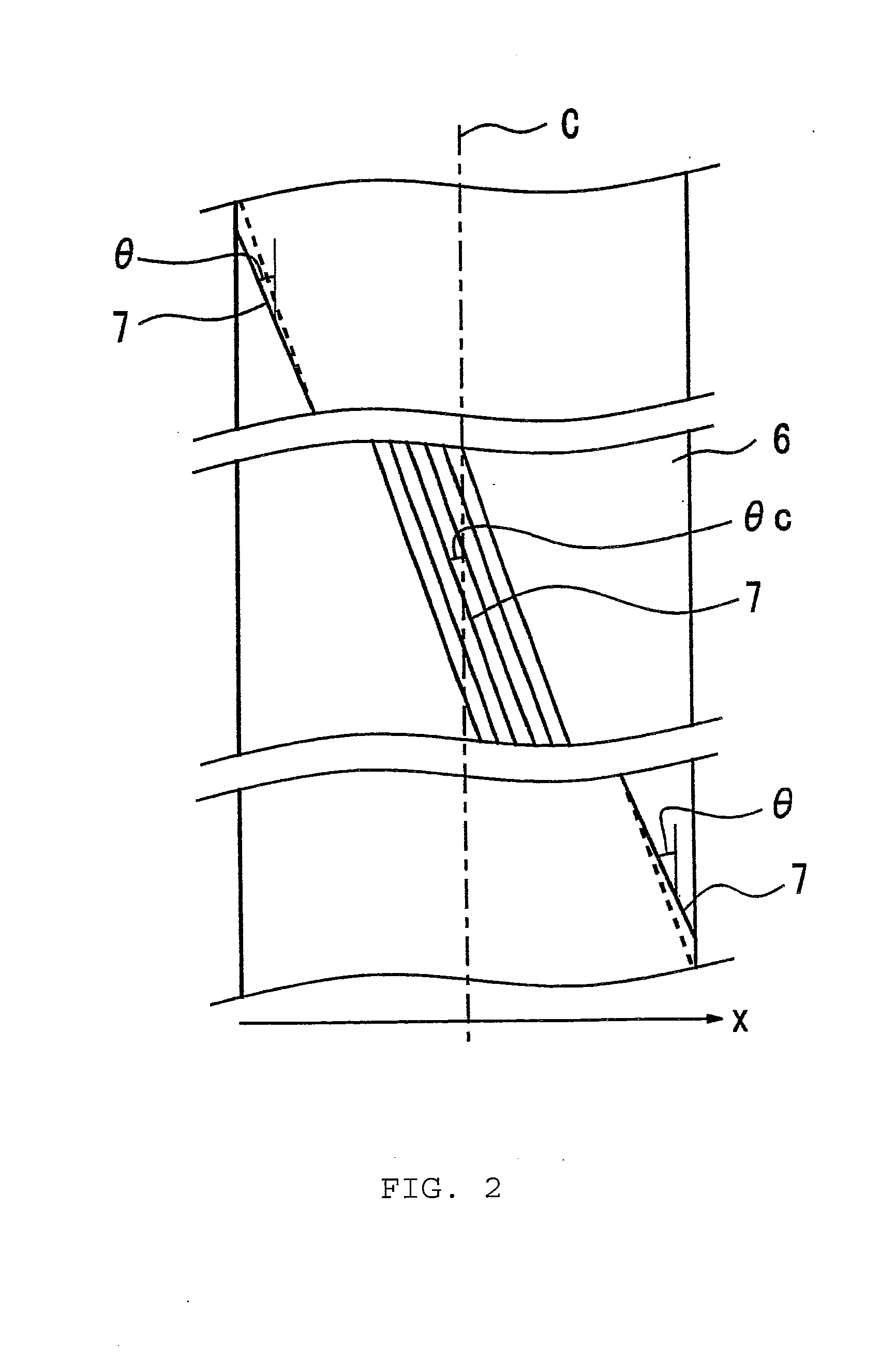Molding Method for a Pneumatic Tire
a technology of pneumatic tires and molding methods, which is applied in the field of pneumatic tires, can solve the problems of inhibiting the generation of uneven wear of treads, and achieve the effect of excellent uniformity and reduced steel cords
- Summary
- Abstract
- Description
- Claims
- Application Information
AI Technical Summary
Benefits of technology
Problems solved by technology
Method used
Image
Examples
example 1
[0052]Tires for Examples and Conventional Examples were manufactured experimentally by die molds composed of 10 sector molds and a pair of side plates, and the angle deviation of steel cords were measured. The tire size was 11R22.5 and the results are shown in FIG. 6. In the figures, the changes in the underbelt diameter (L2 / L1−1) in Examples 1 and 2 and Conventional Example 1 were 0.0, 0.02, and 0.04, respectively. According to this, by making the changes in the underbelt diameter (L2 / L1−1) not greater than 0.02, the angle deviation could be inhibited to not greater than 3 degrees.
example 2
[0053]Tires of Example 1 and the Conventional Example 1 were installed on a truck with a load capacity of 10 tons and the growth amount of an inner surface of the tire after driving 20,000 km was measured. The result is shown in FIG. 7. According to this, in the tire of the present invention, the shape changes in accordance with the increase in driving distance are found to be small. In addition, the growth amount of an inner surface means to be the amount of shape changes in the diameter direction with time passage generated by driving.
example 3
[0054]Further, tires for Example 3 and Conventional Example 2 were manufactured experimentally and the durability of a belt was evaluated. The result is shown in Table 1. For information, the durability of the belt is a driving distance until the tire fails after drum-traveling based on the durability testing of ECE54 is conducted. The result is shown by indices making the value obtained in Conventional Example 1 100.
TABLE 1ComparativeComparativeExample 1Example 2Example 1Example 3Example 2Tire size11R22.511R22.511R22.5275 / 70R22.5275 / 70R22.5Changes in the underbelt0.00.020.040.00.03diameter (L2 / L1 − 1)Maximum angle deviation1.02.54.01.04.0(degree)Durability of a belt130110100150100
PUM
| Property | Measurement | Unit |
|---|---|---|
| angle | aaaaa | aaaaa |
| thickness | aaaaa | aaaaa |
| angle deviation | aaaaa | aaaaa |
Abstract
Description
Claims
Application Information
 Login to View More
Login to View More - R&D
- Intellectual Property
- Life Sciences
- Materials
- Tech Scout
- Unparalleled Data Quality
- Higher Quality Content
- 60% Fewer Hallucinations
Browse by: Latest US Patents, China's latest patents, Technical Efficacy Thesaurus, Application Domain, Technology Topic, Popular Technical Reports.
© 2025 PatSnap. All rights reserved.Legal|Privacy policy|Modern Slavery Act Transparency Statement|Sitemap|About US| Contact US: help@patsnap.com



